I’m getting a bit behind and didn’t manage to post anything last weekend. I’ll try to get back into the habit of posting weekly.
A Little Political Context
I’ve continued to participate in and document political marches and rallies here in Ōtepoti/Dunedin, Aotearoa New Zealand. The general election here in October 2023 resulted in a new National-led coalition government that wasted no time going after Māori (the indigenous people of Aotearoa), renters, the poor, people on welfare, and anyone interested in facilitating walking, cycling, driving electric cars, or any other way of responding proactively to the climate crisis. So there will be more demonstrations.
In post #52, I discussed the Toitū te Tiriti (Uphold the Treaty) rally that took place in Ōtepoti on Saturday, January 20 this year. A much larger event took place here and elsewhere in the country on Tuesday, February 6, 2024. That day is Waitangi Day when we celebrate the signing of Te Tiriti o Waitangi (the Treaty of Waitangi), the founding document of Aotearoa.
The Waitangi Day Hīkoi (walk) was an impressive event. The police were apparently prepared for about 300 people, but over 2,000 gathered at Queens Gardens and marched peacefully to The Octagon to protest the Government’s comprehensive attack on Māori, including on Te Reo (Māori language), Māori health, and, especially, on Te Tiriti o Waitangi.
The ACT (Association of Consumers and Taxpayers) Party, along with New Zealand First, is a minor party in the coalition government (they won 8.6% of the votes cast). To become Prime Minister, the National Party leader, Christopher Luxon (who bears a striking resemblance to Lex Luthor, Superman’s nemesis in the original DC Comics) agreed to support (at least to the first reading) the ACT Party’s policy of holding a referendum to reconsider the treaty principles. David Seymour, the leader of the ACT Party, thinks it would be a good idea if one of the two parties that signed Te Tiriti unilaterally decided that the treaty is actually not a partnership, that it doesn’t actually grant any special rights, privileges, or protections to Māori, and that none of the historic treaty breaches actually need to be addressed. His proposed treaty principles don’t even mention Māori. Christopher Luxon has tried to wash his hands of this dangerously divisive policy by saying it has nothing to do with him. As he explains it, if he stands by while his thugs beat up on people, he gets to be the leader of the pack and that’s a price we should all be prepared to pay.
Despite being a gainfully employed, healthy 40-year-old male from an upmarket Auckland suburb, David Seymour is single. The word on the street is that no one would be foolish enough to enter into a serious relationship with someone who might, at any time after the wedding, declare that a marriage isn’t a partnership and that his partner (he’d probably find another word) had no special status and no more rights than anyone else he might bump into on the street.
Photographing the Waitangi Day Hīkoi
As with the Toitū te Tiriti (Uphold the Treaty) rally, I spoke with the organisers before taking any photographs to see if there were any particular protocols I should be aware of and if there were any people or activities that I should not photograph. I told him that I would put the photographs in a private folder online that he could review before I shared any images. All the images he thought could be shared would be released with a Creative Commons Attribution (CC-BY) License. Whenever it was possible, I asked people if it was OK for me to photograph them.
Street photography is generally defined as the practice of taking traditional photographs (real images, not AI-generated promtography), in public places, in a candid manner (nothing is staged and the subjects are not posed). Increasingly, I’ve wrestled with the candid part. Although in New Zealand, as in most countries, it is legal to take a photograph of anyone in (or observable from) a public place without their knowledge or consent, what is legal is not necessarily ethical. Also, photography is an opportunity to connect and engage with people in the way a photograph is taken and in the way it is displayed, shared, and distributed. I am learning to value the process of social engagement more than the photograph as a final product.
As someone who was attending the rally as a participant as well as a photographer, I wanted to communicate how it felt to be part of the protest rather than show what the protest looked like to a dispassionate observer. The first image below (55a) is an establishment shot that documents the message the rally organisers wanted to project. A photo much like this one was published in the Otago Daily Times, our local newspaper, the following Monday morning. I took many shots of the advancing marchers, shooting at 24 mm at close range from a low perspective. But most of the time, I shot from within the crowd while marching with them, sometimes walking backward (55d).
I weaved through the protesters, exchanging quick looks and gestures that indicated whether they were happy to be photographed or not. At times, I crouched on the side and shot as protesters passed (55b, 55c). Although the warriors leading the marchers attracted a lot of attention, I wanted to document the young women, the old men, the children, the families, and the different races and faces of the marchers and speakers (55e, 55f). I picked out people (55g) who could stand in for the viewer. It is easier to identify with an individual than with a crowd. A personal story is more touching than a grand narrative. When the speeches began, I sat in front of the stage so I could get close and personal (55h, 55i). At times, I shot from just off the stage from the side (55j), or from behind.
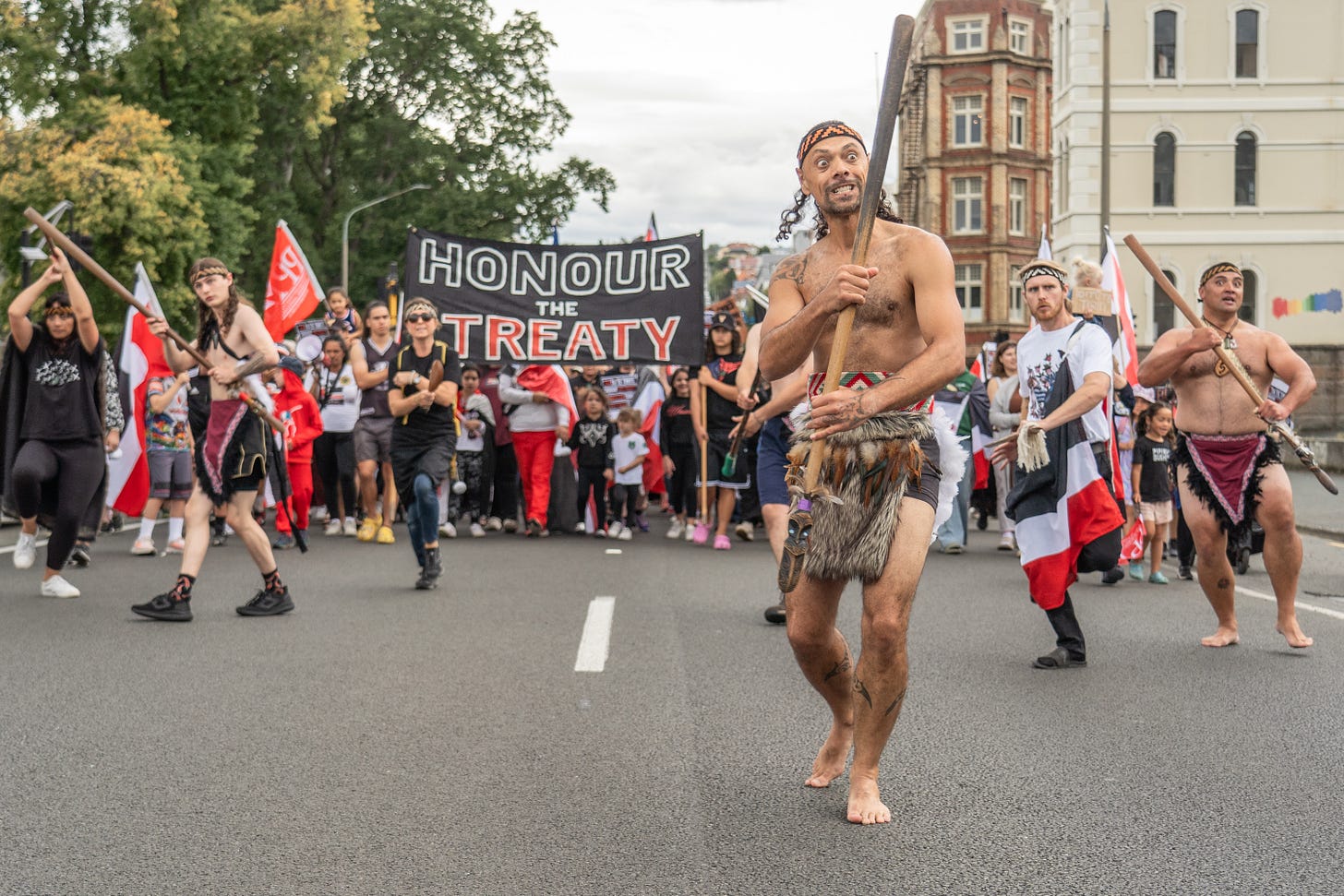
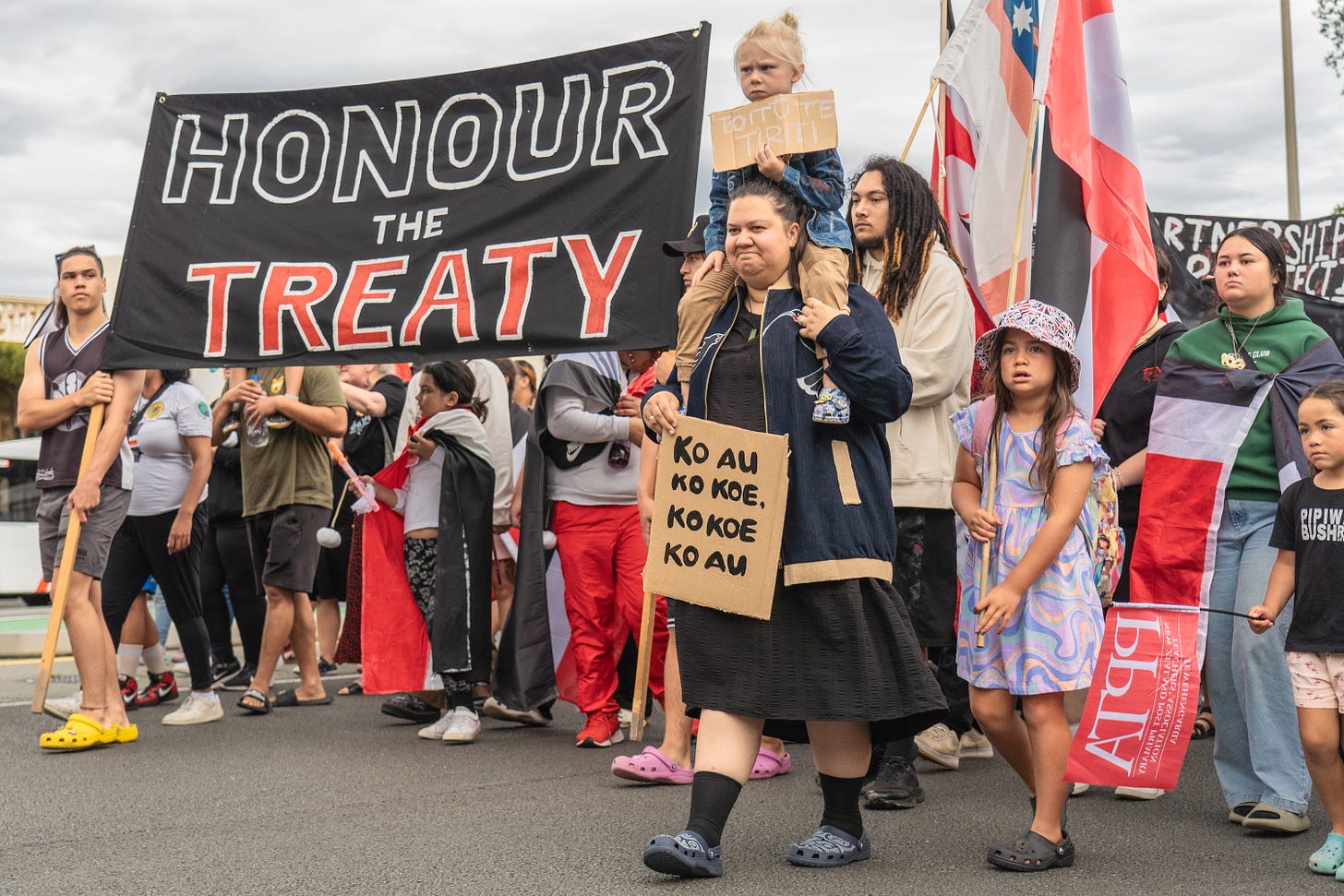
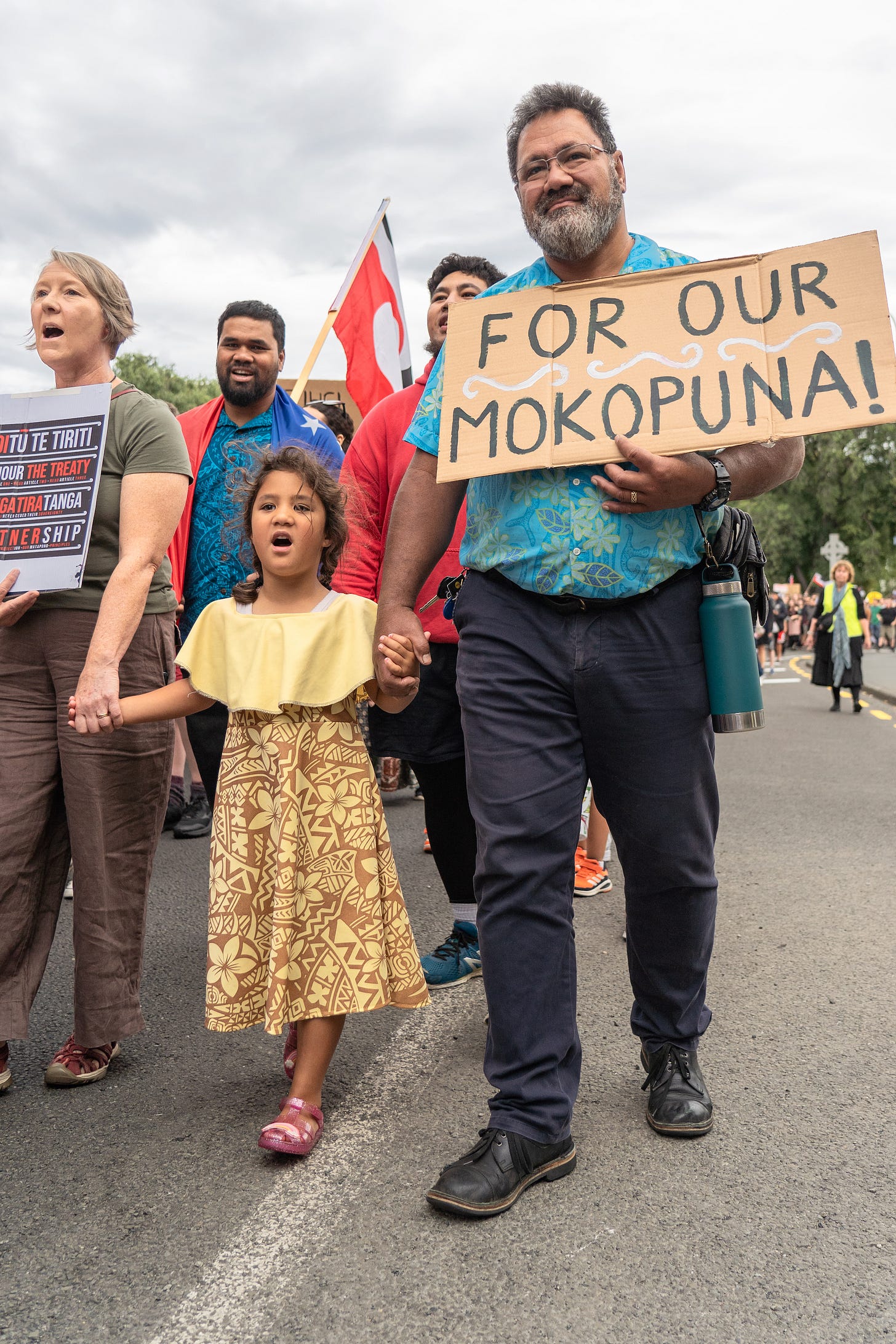
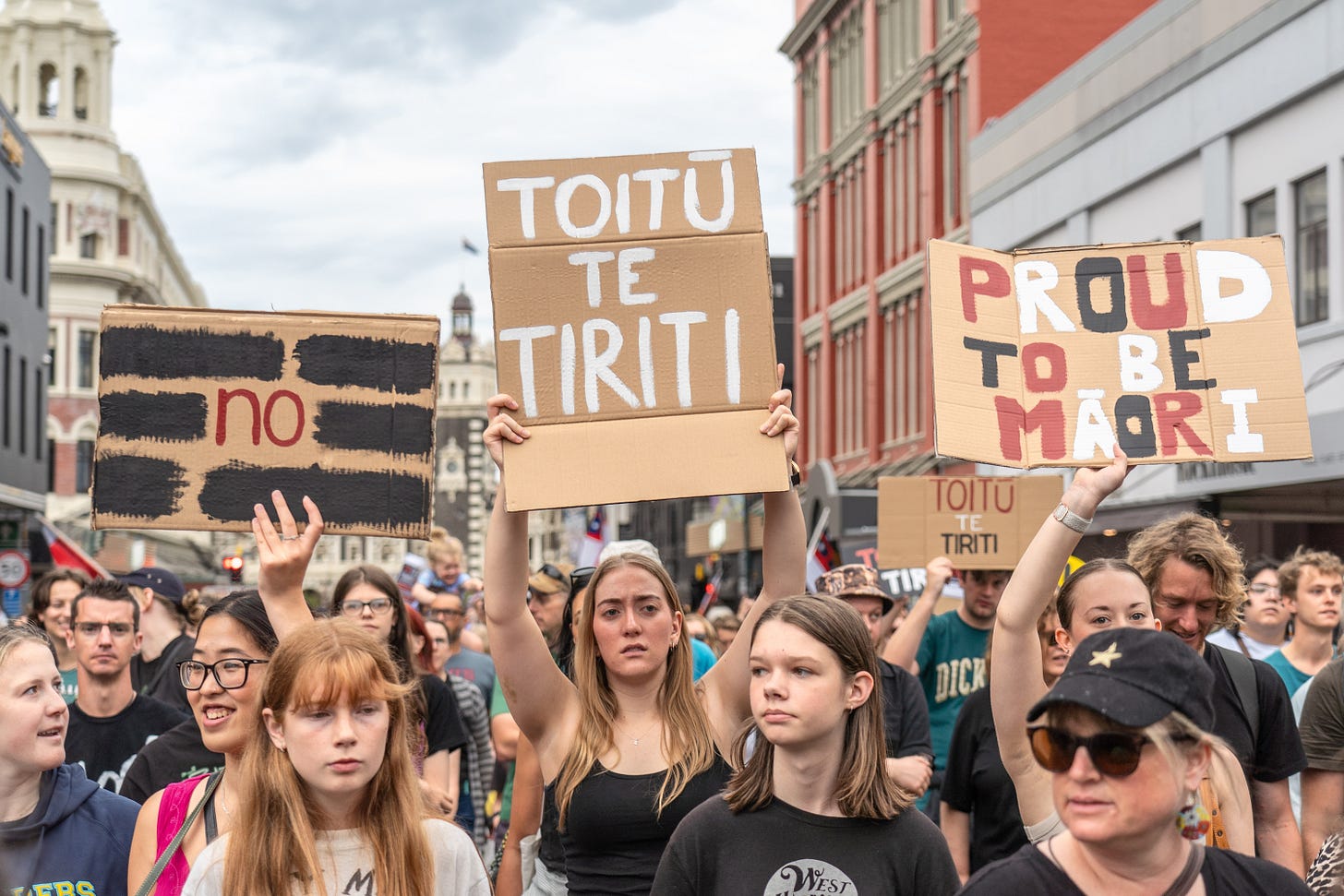
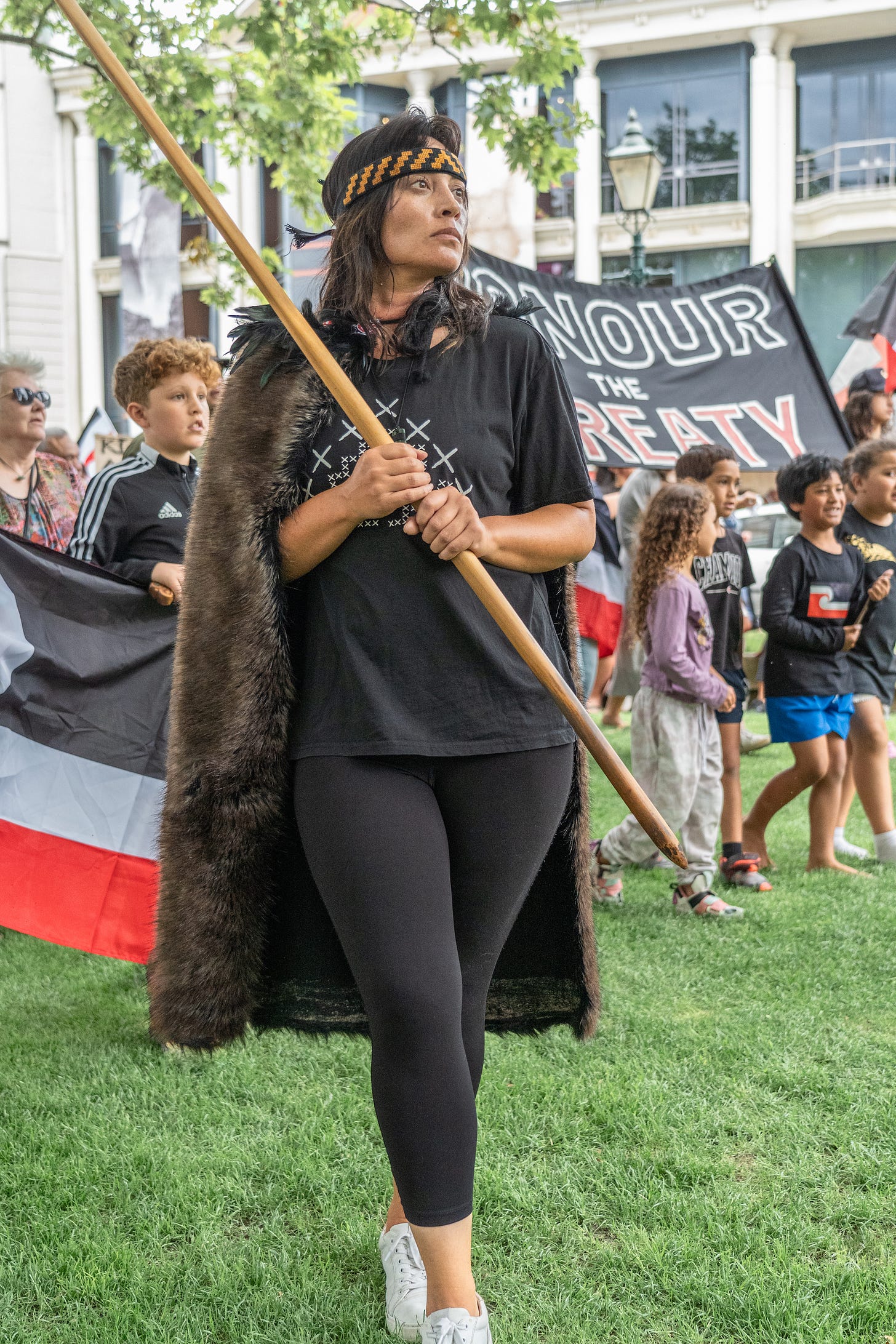
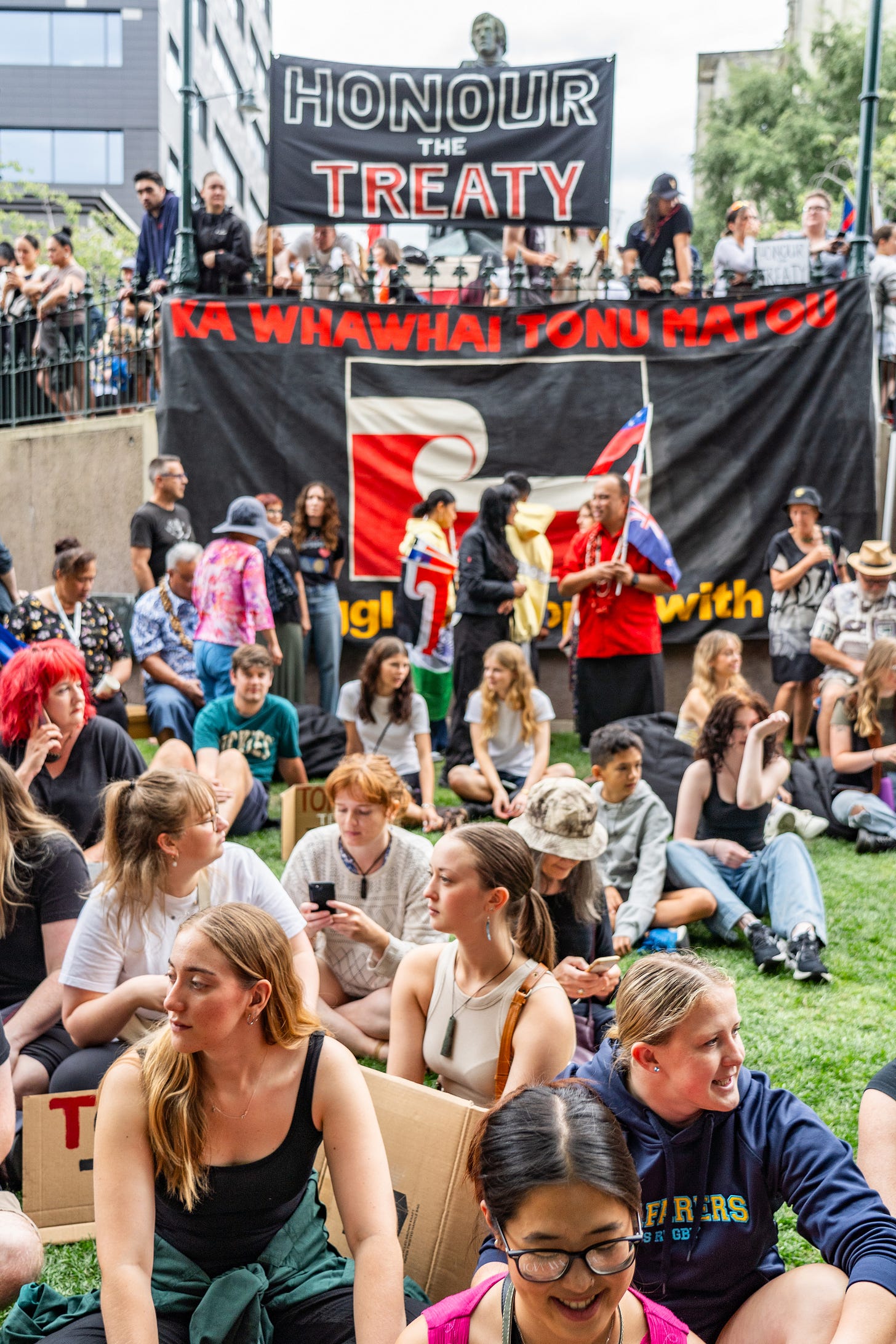
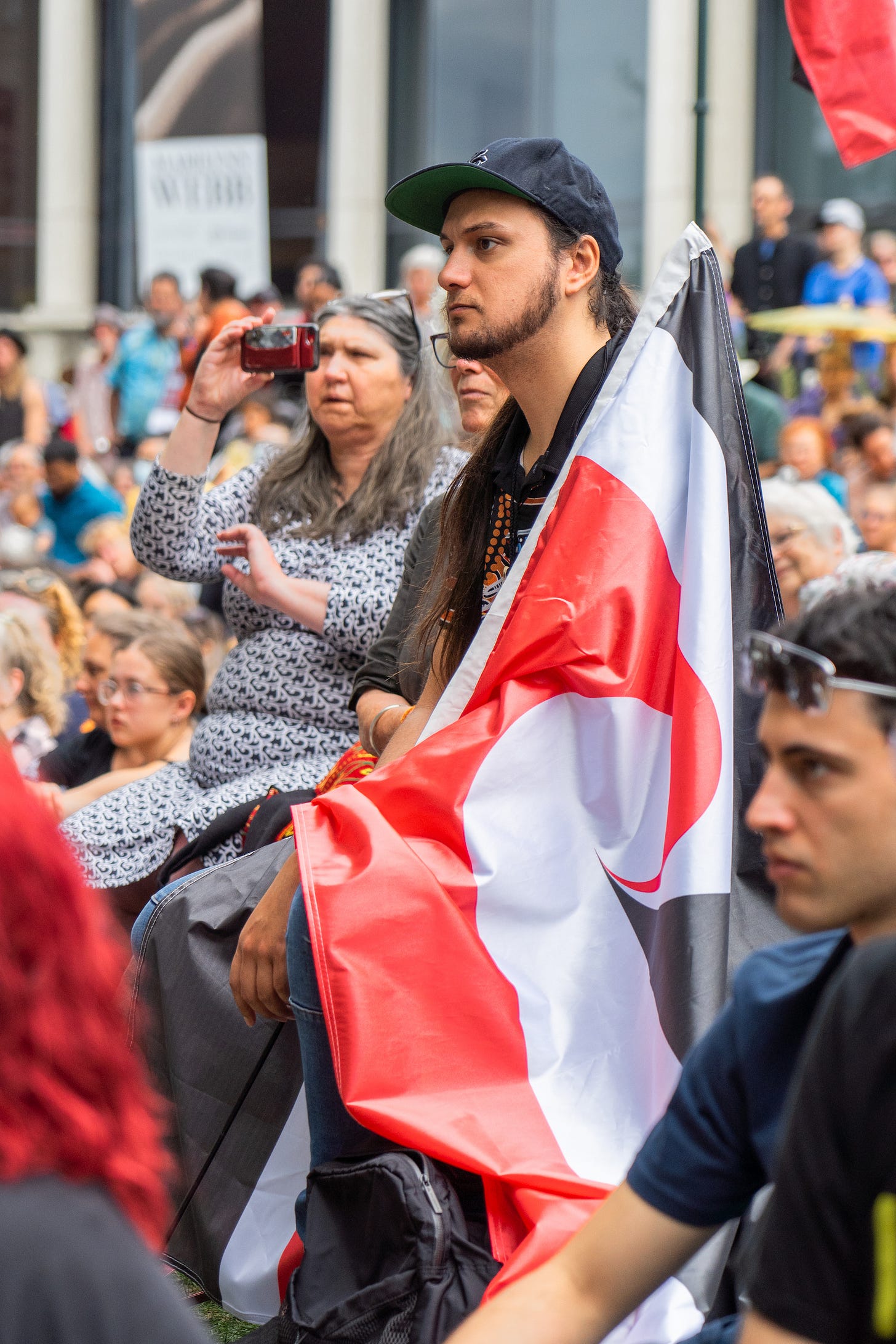
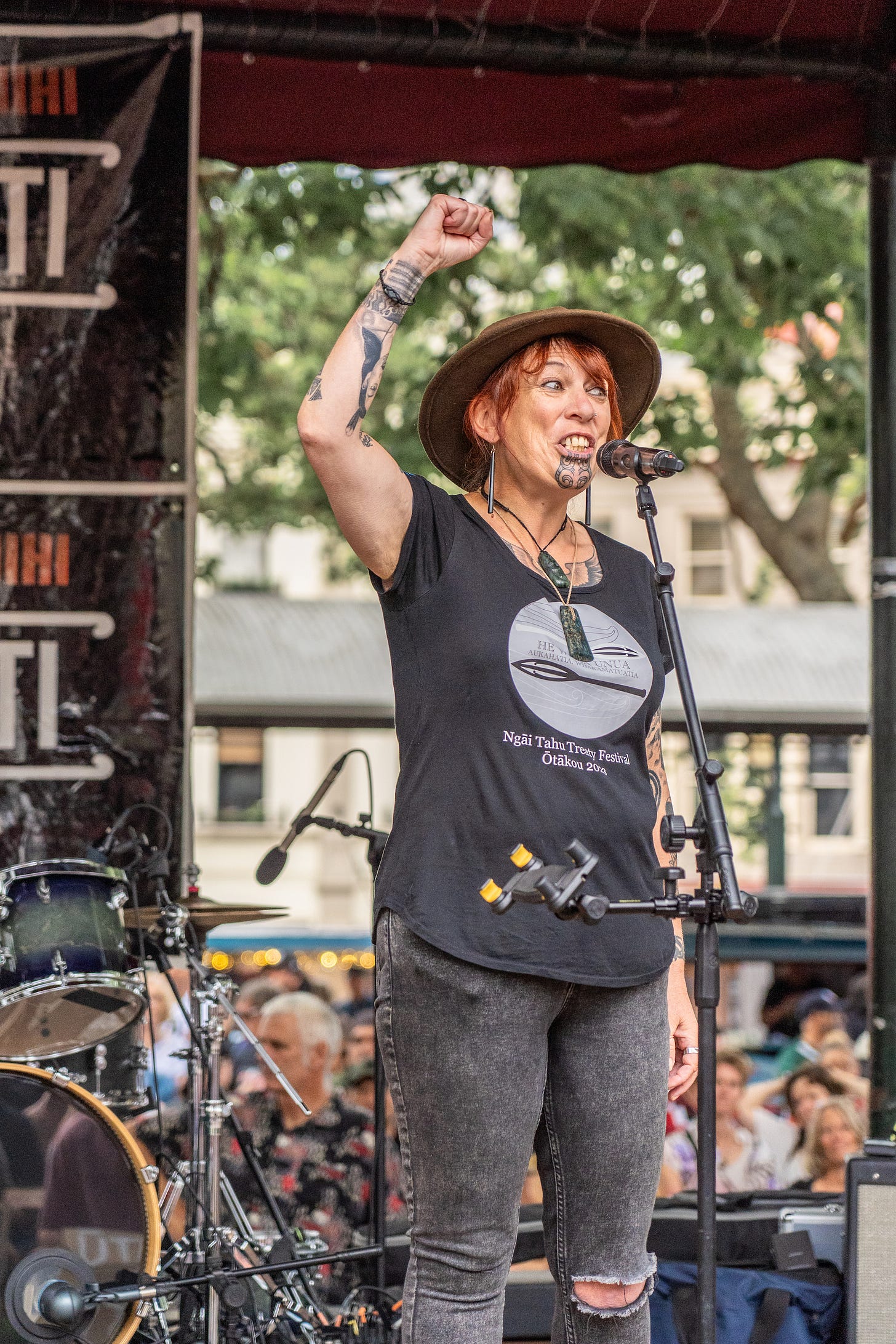
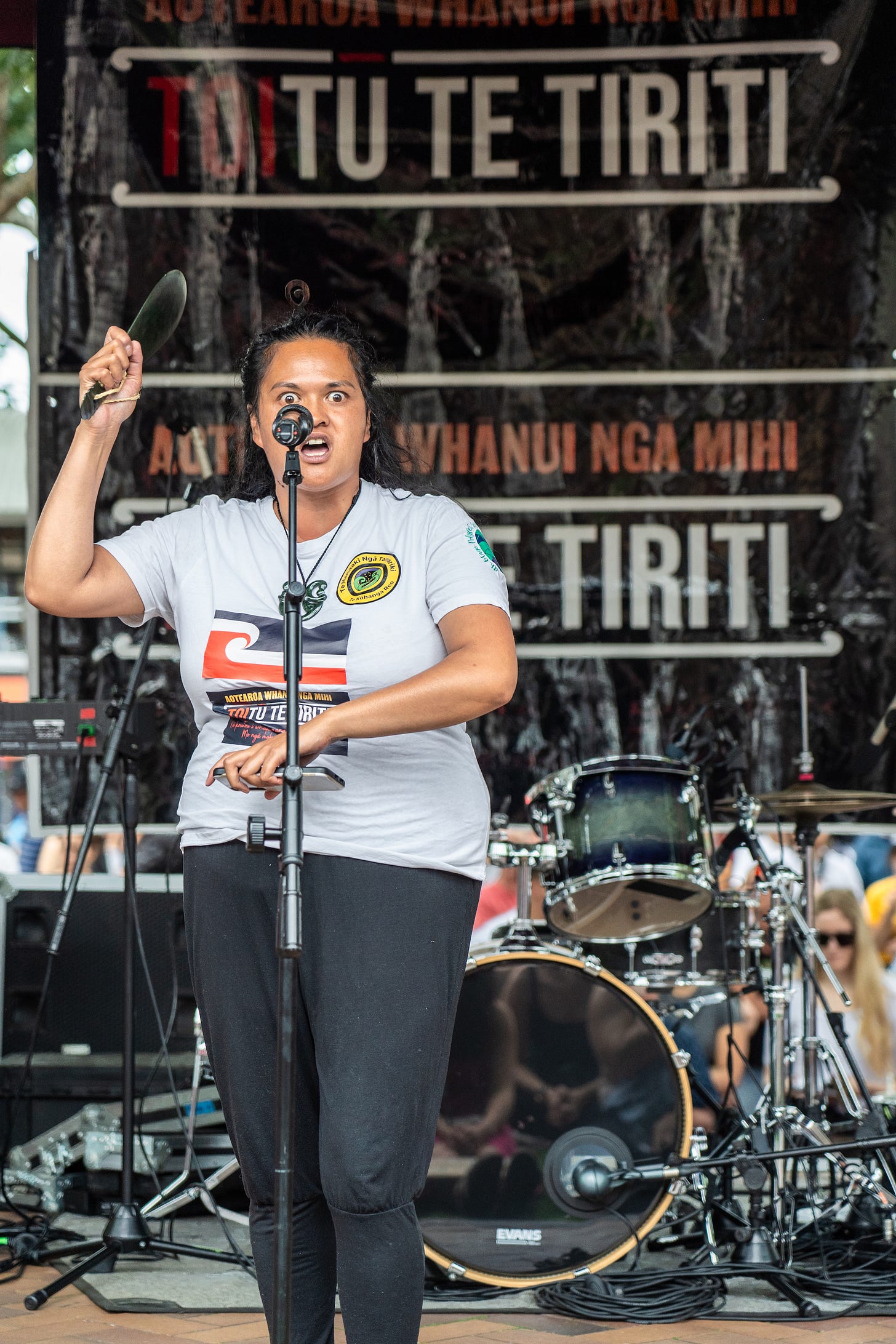
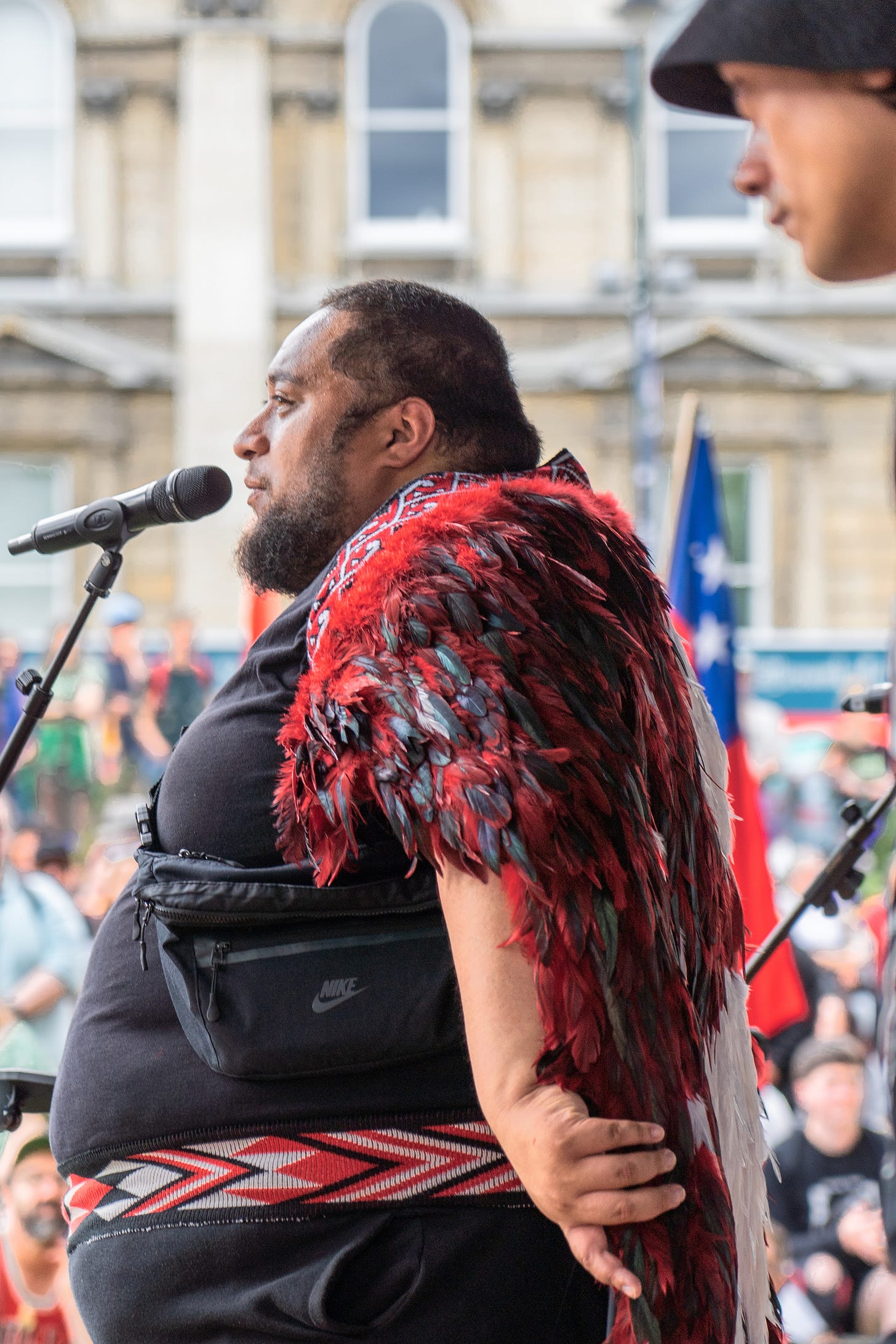
Technical Details
These photos were taken with a 24-megapixel Sony A7 III full-frame digital camera and a Sony FE 24-105 F4 G OSS lens. I set the f-stop to 4.0 (the fastest setting for this lens), kept the shutter speed at 1/500 or faster, and monitored the ISO. All images were shot in RAW format and processed using Adobe Lightroom. They have been sampled down to 3,000 pixels in the longest dimension for this post.
I shot about 2,100 photos. It took me several days to edit and process them. I kept about 750 and shared 250 that I uploaded to a folder on OneDrive. You can access these using the following link (you are welcome to share the link):
http://tinyurl.com/Otepoti6Feb2024
All photos carry a Creative Commons Attribution Only (CC-BY) license, so you can download the photos and do what you like with them.
What’s next?
I have a large and growing collection of protest photos, mostly from the weekly pro-Palestinian Ceasefire Now! marches and rallies that I’ve been taking part in. But I have been out on the streets photographing other things as well. I also want to discuss the advantages of engaging with communities and subjects, the use of Creative Commons licenses, and remix culture. I have been reading other Substacks about photography and exchanging comments with the authors, so I also want to report on what I’ve learned.
What do you think?
Thank you for taking the time to read this post. I invite you to leave a comment below.




Thank you for the explanation. How did a 8.6% minority become PM??? Is NZ experiencing a white-nationalist backlash like here in the US?
RE: your low angle POV. Kudos! Nice choice.
RE: your asking permission. I understand the political/cultural issues you are sensitive to, but IMO, a public protest is a blank check to record what you see and hear. Unless you are an advocate of the protesters. I covered over 15 BLM marches and protests here in Seattle 2020-2021. Some turned ugly thanks to ugly protesters. Some turned ugly thanks to ugly cops. I refused to follow anyone's rules of what to shoot or not shoot. The truth as I saw it warranted that open ended approach.
Just my thoughts and experiences to share.
Another excellent set of photos and narrative.